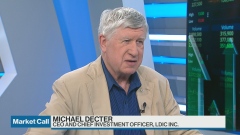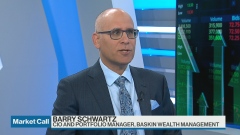Apr 25, 2023
One-year GICs see boom in popularity thanks in part to interest rate hikes
, BNN Bloomberg
Now is the time to take advantage of higher GIC rates: GIC Wealth Management’s Brandon Brot
Brandon Brot has found himself much sought after at dinner parties and other gatherings over the past year.
Brot, the principal at GIC Wealth Management, which currently has over $500 million under management, says enquiries related to Guaranteed Investment Certificates (GICs) at their Toronto-based financial services company are up ten-fold. With GIC rates rising significantly since the Bank of Canada and the U.S. Federal Reserve started increasing interest rates last year, the investment option is enjoying a comeback.
“GICs were the hottest game in town last year. People were unsure of the market, they didn’t know where to put their funds. If you can get a guaranteed rate of over five per cent with no risk, why wouldn’t you take it?” Brot said.
“The last time we were at this level, it was before the financial crisis in 2007-08,” says Kingsley Chak, senior vice-president for retail deposits, savings and investments at Scotiabank. GIC deposits in Canada grew over 60 per cent from January 2022 to the same month this year. During that period, the one-year GIC rate at Scotiabank went from around one per cent to over four per cent. At present, it stands at three per cent.
First Ontario Credit Union and its online subsidiary Saven Financial have witnessed a similar trend.
“There was a huge shift from high interest savings accounts into GICs over the past year,” says Chief Operating Officer Mark Perkins. The Ontario-based credit union now offers 4.55 per cent for a one-year GIC, while Saven offers an even higher 5.15 per cent.
Across Canada, one-year GIC rates range from three to 4.45 per cent at bigger banks and four to five per cent or higher at credit unions, online banks and smaller institutions. Explaining the difference in rates, Brot says, “Big banks don’t have to offer the highest rates. Some clients go to them because that’s all they know. The other reason is some institutions don’t need money right now. A lot of them don’t want to be on the hook for a long term at over five per cent.”
About 80 per cent of GIC Wealth Management’s business is in GICs. Traditionally, older customers have been the most common investors in GICs. But the jump in rates for shorter durations pulled in newer customers last year.
Brot says, “Typically our clients are 65 and above. Last year we did a lot of professionals, 30-40 year olds, people who wanted to take some TFSA money, RSP money or just money they had lying around and put it somewhere safe. When people see five per cent they got really excited.”
In a recent report, CIBC Capital Markets economists Benjamin Tal and Karyne Charbonneau noted that an estimated 85 per cent of Canadian GICs are being held for one-year terms.
Rates for U.S. dollar GICs have also climbed in recent months. While they are mostly offered by bigger banks, and return under four per cent for a year, you can get 5.6 per cent for a one-year GIC right now at SBI Canada Bank, the Canadian arm of India’s largest bank. These deposits mostly cater to companies or individuals doing business in the U.S., snowbirds or residents of towns bordering the U.S.
Going forward, the industry expects rates to hover around the current range through this year. Perkins says bankers have learned to be more nimble after overreacting to rate hikes last year.
“About a year ago, a lot of banks and other entities saw that the risk of rates going up even more was there. So they reacted faster than they usually would to an increasing rate environment and increased the rate on their GICs in order to get the funds in at a lower price than they were projecting would happen in six to nine months,” he says.
The Bank of Canada has signalled an open mind on interest rates, depending on inflation trends. But GIC rates won’t necessarily reflect the BoC’s moves immediately, as Chak explains: “One misconception is that the GIC rate would change once the BoC announces a rate hike or rate cut. Actually GIC pricing is based on the market expectation of where the rate is going. And right now, it’s for a rate decrease in December.”
George Ripoll, portfolio manager at BMO Nesbitt Burns, adds, “GIC rates have been coming under pressure since the start of the year. Banks are heavily pricing in rate cuts for longer duration maturities.”
GICs at banks are insured by the Canada Deposit Insurance Corporation, and at other institutions by provincial regulators like Financial Services Regulatory Authority of Ontario. For those looking beyond GICs to take advantage of higher rates, bonds are another option, says Ripoll.
“There are some fairly priced bonds that may offer a more attractive risk reward, especially at the rates they are paying right now plus the assurance that full principal will be paid back at maturity.”
Investment advisers note that GICs are primarily for those who are risk averse and/ or have excess liquidity. Volatile markets and high interest rates have combined to broaden their appeal right now.








